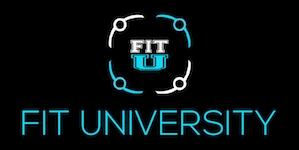As a college student, eating healthy is hard.
Even as a student studying nutrition, I’ll be the first one to admit that.
It’s easy to get caught up in a busy schedule. I mean, between classes, working out, having a social life, volunteering, and getting enough sleep, sometimes takeout seems like the best (or only) option.
But since March brings National Nutrition Month® created and celebrated by the Academy of Nutrition and Dietetics, I wanted to personally take the time to appreciate having food security and acknowledge that it’s perfectly okay to not always meal plan, prep, eat all your fruits and veggies 100% of the time.
This year’s theme encourages everyone to start with small changes. One forkful at a time. “Put Your Best Fork Forward”. I feel the theme perfectly describes how the nutrition field is emphasizing:
- More mindful eating habits,
- Paying attention to what we are putting into our bodies, and
- Finding a good balance between eating right and enjoying yourself in moderation.
So I’m making a list, some inspired by the Academy and some by my peers, on how we all can “Put our Best Fork Forward” during the month of March. I challenge you to pick at least one small change to stick with for at least this month, and hopefully it will snowball into making more nutrition focused #goals for the rest of 2017!
1. Make a list before you go to the grocery store.
The hardest part about grocery shopping for me is spending extra money on items I really don’t need. Making a list beforehand and planning your meals for the week will help you save money at the store by only allowing yourself to get what’s on said list.
Invest in a cute cheap notepad to make your lists on so you can have a physical copy to check stuff off of when you get there!
2. Pack your lunch.
Yup, brown bag it, invest in an insulated lunch box and a few pieces of tupperware! Prepping your lunch the night before will set you up for success the next day during your busy school day schedule.
3. Cut back on added sugars.
Food and drinks with added sugars can contribute to empty calories, spike your blood sugar levels, leaving you to crash soon after that sugar rush. Visit www.choosemyplate.gove to learn more about reading the nutrition label to help identify those hidden sugars and proper serving sizes.
4. Try Meatless-Monday.
Save money and help cut down on your dietary intake of cholesterol by substituting a variety of different veggies into your favorite recipes! Try a cauliflower crust pizza, substitute beans and lentils for protein, or if you’re missing the meaty texture try using tofu!
5. Turn off the TV.
One of my toughest challenges is really paying attention to my meals when I sit down in my apartment. We don’t even have a kitchen table! It’s so easy to flick on the tv, flop on the couch, and mindlessly devour an entire meal without even really tasting or appreciating it.
Try to limit distraction while eating (maybe even waiting until after to post your food up on Instagram) and savor every little bit of food from the delicious meal you just prepared. This also helps to avoid overeating and can help you to better understand your cravings.
6. Understand portion sizes.
Haven’t learned how to read a nutrition label yet? Most prepackaged foods contain 2 servings instead of 1, so it can be misleading on what you’re actually intaking in terms of calories/nutrients. You can learn more about that from the Academy here.
7. Eat more whole foods.
With all of the new “low calorie” “low sugar” “high protein” products on the shelves these days, it’s easy to get lost in pre-packaged-food-land.
Try grabbing for more fruits and vegetables to snack on during the day paired with hummus or peanut butter instead of reaching for that protein bar. Making the shift to eating more whole foods will help you get in extra vitamins, fiber, and antioxidants leading to more natural energy.
Stumped on what whole foods to snack on? Head here for some inspiration!
Check out these articles too:
